The African wild dog is a highly social animal, living in packs with separate dominance hierarchies for males and females. Uniquely among social carnivores, it is the females rather than the males that scatter from the natal pack once sexually mature, and the young are allowed to feed first on carcasses. The species is a specialised diurnal hunter of antelopes, which it catches by chasing them to exhaustion. Like other canids, it regurgitates food for its young, but this action is also extended to adults, to the point of being the bedrock of African wild dog social life.[3][4][5] It has few natural predators, though lions are a major source of mortality, and spotted hyenas are frequent kleptoparasites.
Although not as prominent in African folklore or culture as other African carnivores, it has been respected in several hunter-gatherer societies, particularly those of the predynastic Egyptians and the San people.
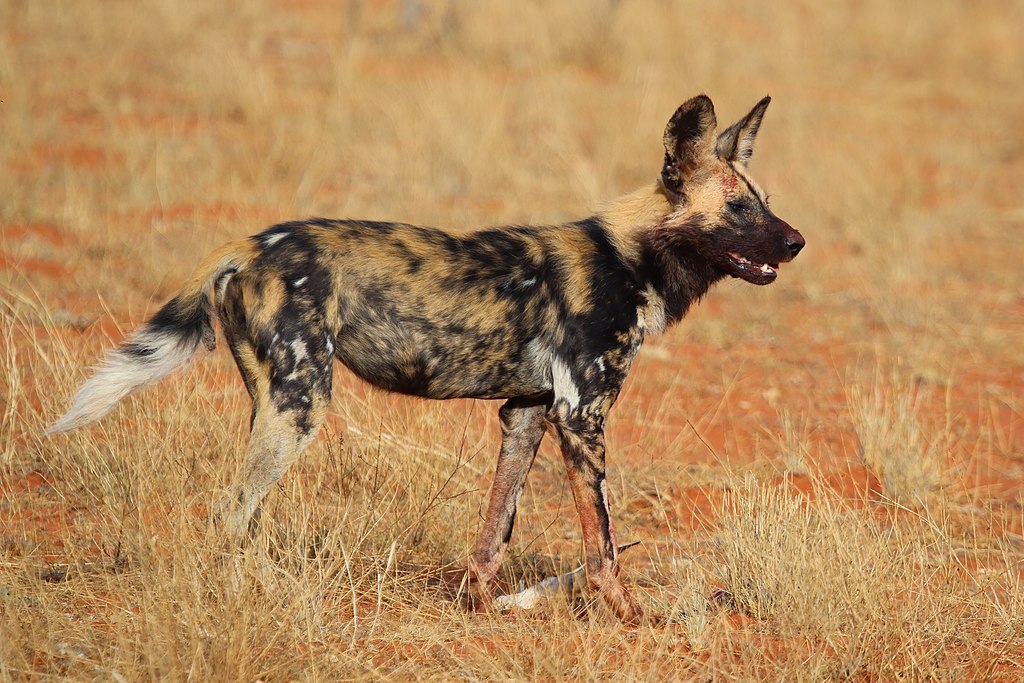
Early accounts and naming
The earliest possible written reference to the species comes from Oppian, who wrote of the thoa, a hybrid between the wolf and leopard, which resembles the former in shape and the latter in colour. Solinus's Collectanea rerum memorabilium from the 3rd century AD describes a multicoloured wolf-like animal with a mane native to Ethiopia.[6]
The species was first described scientifically in 1820 by Coenraad Temminck, after having examined a specimen taken from the coast of Mozambique. He named the animal Hyaena picta, erroneously classifying it as a species of hyena. It was later recognised as a canid by Joshua Brookes in 1827, and renamed Lycaon tricolor. The root word of Lycaon is the Greek λυκαίος (lykaios), meaning "wolf-like". The specific epithet pictus (Latin for "painted"), which derived from the original picta, was later returned to it, in conformity with the International Rules on Taxonomic Nomenclature.[7]
The English language has several names for Lycaon pictus, including painted lycaon,[6] African wild dog, Cape hunting dog,[8] and painted dog or painted wolf. The latter name is being promoted by some conservationists as a way of rebranding the species, as "wild dog" has several negative connotations that could be detrimental to its image.[9] Nevertheless, the name "African wild dog" is still widely used.[10]
| [show]Linguistic group or area | Indigenous name |
|---|
Taxonomy and evolution
| Phylogenetic tree of the extant wolf-like canids | ||||||||||||||||||||||||||||||||||||||||||||||||||||||||||||||||||
|
||||||||||||||||||||||||||||||||||||||||||||||||||||||||||||||||||
| Phylogenetic relationships between the extant wolf-like clade of canids based on nuclear DNA sequence data taken from the cell nucleus,[11][12] except for the Himalayan wolf, based on mitochondrial DNA sequences.[12][13] Timing in millions of years.[12] |
The evolution of the African wild dog is poorly understood due to the scarcity of fossil finds. Some authors consider the extinct Canis subgenus named Xenocyon as ancestral of both genus Lycaon and genus Cuon,[14][15][16][17]:p149 which lived throughout Eurasia and Africa from the Early Pleistocene to the early Middle Pleistocene. Others propose that Xenocyon should be reclassified as Lycaon.[18] The species Canis (Xenocyon) falconeri shared the African wild dog's absent first metacarpal (dewclaw), though its dentition was still relatively unspecialised.[18] This connection was rejected by one author because C. (X.) falconeri's missing metacarpal was a poor indication of phylogenetic closeness to the African wild dog, and the dentition was too different to imply ancestry. Another ancestral candidate is the Plio-Pleistocene L. sekowei of South Africa, on the basis of distinct accessory cusps on its premolars and anterior accessory cuspids on its lower premolars. These adaptions are found only in Lycaon among living canids, which shows the same adaptations to a hypercarnivorous diet. L. sekowei had not yet lost the first metacarpal absent in L. pictus, and was more robust than the modern species, having 10% larger teeth.[19]
Paleontologist George G. Simpson placed L. pictus in the subfamily Simocyoninae, along with Cuon alpinus and Speothos venaticus, on the basis of all three species having similarly trenchant carnassials. This grouping was disputed by Juliet Clutton-Brock, who argued that, other than dentition, there were too few similarities between the three species to warrant classifying them in a single subfamily.[20] The species' molecular genetics indicate that it is closely related to genus Canis.[21] Phylogenetic studies place L. pictus and Cuon alpinus into a clade of "wolf-like canids" alongside the extant members of the Canis genus, including C. simensis, C. aureus, C. latrans, C. lupus and the more basal C. adustus and C. mesomelas.[11](Fig. 10)
Subspecies
As of 2005,[22] five subspecies are recognised by MSW3:| Subspecies | Image | Trinomial authority | Description | Range | Synonyms |
|---|---|---|---|---|---|
| Cape wild dog L. p. pictus Nominate subspecies |
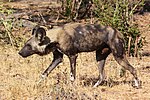 |
Temminck, 1820 | Specimens inhabiting the Cape are characterised by the large amount of orange-yellow fur overlapping the black, the partially yellow backs of the ears, the mostly yellow underparts, and a number of whitish hairs on the throat mane. Those in Mozambique are distinguished by the almost equal development of yellow and black on both the upper and underparts of the body, as well as having less white fur than the Cape form.[23] | Southern Africa | cacondae (Matschie, 1915), fuchsi (Matschie, 1915), gobabis (Matschie, 1915), krebsi (Matschie, 1915), lalandei (Matschie, 1915), tricolor (Brookes, 1827), typicus (A. Smith, 1833), venatica (Burchell, 1822), windhorni (Matschie, 1915), zuluensis (Thomas, 1904) |
| East African wild dog L. p. lupinus |
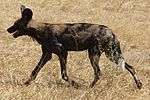 |
Thomas, 1902 | Distinguished by its very dark coat, with very little yellow.[23] | East Africa | dieseneri (Matschie, 1915), gansseri (Matschie, 1915), hennigi (Matschie, 1915), huebneri (Matschie, 1915), kondoae (Matschie, 1915), lademanni (Matschie, 1915), langheldi (Matschie, 1915), prageri (Matschie, 1912), richteri (Matschie, 1915), ruwanae (Matschie, 1915), ssongaeae (Matschie, 1915), stierlingi (Matschie, 1915), styxi (Matschie, 1915), wintgensi (Matschie, 1915) |
| West African wild dog L. p. manguensis |
Matschie, 1915 | West and Central Africa | mischlichi (Matschie, 1915) | ||
| Chadian wild dog L. p. sharicus |
Thomas and Wroughton, 1907 | Chad | ebermaieri (Matschie, 1915) | ||
| Somali wild dog L. p. somalicus |
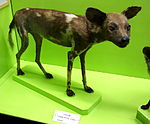 |
Thomas, 1904 | Similar to lupinus, but is smaller, has shorter and coarser fur, and has a weaker dentition. Its colour closely approaches that of the Cape form, with the yellow parts being buff rather than bright orange as is the case in lupinus.[23] | Horn of Africa | luchsingeri (Matschie, 1915), Matschie (Matschie, 1915), rüppelli (Matschie, 1915), takanus (Matschie, 1915), zedlitzi (Matschie, 1915) |
Physical description
L. pictus skull (left) compared with that of C. lupus (right). Note the former's shorter muzzle and fewer molars.
The closeup of head in Kruger National Park
The fur of the African wild dog differs significantly from that of other canids, consisting entirely of stiff bristle-hairs with no underfur.[25] It gradually loses its fur as it ages, with older specimens being almost naked. Colour variation is extreme, and may serve in visual identification, as African wild dogs can recognise each other at distances of 50–100 metres.[27] There is some geographic variation in coat colour, with north-east African specimens tending to be predominantly black with small white and yellow patches, while southern African ones are more brightly coloured, sporting a mix of brown, black and white coats.[8] Much of the species' coat patterning occurs on the trunk and legs. There is little variation in facial markings, with the muzzle being black, gradually shading into brown on the cheeks and forehead. A black line extends up the forehead, turning blackish-brown on the back of the ears. A few specimens sport a brown teardrop shaped mark below the eyes. The back of the head and neck are either brown or yellow. A white patch occasionally occurs behind the forelegs, with some specimens having completely white forelegs, chests and throats. The tail is usually white at the tip, black in the middle and brown at the base. Some specimens lack the white tip entirely, or may have black fur below the white tip. These coat patterns are asymmetrical, with the left side of the body often having different markings from that of the right.[27]
Behaviour
Social and reproductive behaviour
Play fighting after a kill, Tswalu Kalahari Reserve, South Africa
African wild dog populations in East Africa appear to have no fixed breeding season, whereas those in Southern Africa usually breed during the April–July period.[28] During estrus, the female is closely accompanied by a single male, who keeps other members of the same sex at bay.[26] The copulatory tie characteristic of mating in most canids has been reported to be absent[30] or very brief (less than one minute)[31] in L. pictus, possibly an adaptation to the prevalence of larger predators in its environment.[32] The gestation period lasts 69–73 days, with the interval between each pregnancy being 12–14 months on average. The African wild dog produces more pups than any other canid, with litters containing around 6–16 pups, with an average of 10, thus indicating that a single female can produce enough young to form a new pack every year. Because the amount of food necessary to feed more than two litters would be impossible to acquire by the average pack, breeding is strictly limited to the dominant female, which may kill the pups of subordinates. After giving birth, the mother stays close to the pups in the den, while the rest of the pack hunts. She typically drives away pack members approaching the pups until the latter are old enough to eat solid food at 3–4 weeks of age. The pups leave the den at around the age of three weeks, and are suckled outside. The pups are weaned at the age of five weeks, at which point they are fed regurgitated meat by the other pack members. By seven weeks, the pups begin to take on an adult appearance, with noticeable lengthening in the legs, muzzle and ears. Once the pups reach the age of 8–10 weeks, the pack abandons the den, and the young follow the adults during hunts. The youngest pack members are permitted to eat first on kills, a privilege which ends once they become yearlings.[26]
Sneeze Communication and "Voting"
African wild dog populations in the Okovango delta have been observed "rallying" before they set out to hunt. Not every rally results in a departure, but departure becomes more likely when more individual dogs "sneeze". These sneezes are characterized by a short sharp exhale through the nostrils[33]. When members of dominant mating pairs sneeze first, the group is much more likely to depart. If a dominant dog initiates, approximately 3 sneezes guarantee departure. When less dominant dogs sneeze first, if enough others also sneeze (~10) then the group will go hunting. Researchers assert that wild dogs in Botswana, "use a specific vocalization (the sneeze) along with a variable quorum response mechanism in the decision-making process [to go hunting at a particular moment]".[34]
L. p. pictus pack, Kruger National Park, South Africa
Inbreeding avoidance
Because L. pictus largely exists in fragmented small populations, its existence is endangered. Inbreeding avoidance via mate selection is characteristic of the species and has important potential consequences for population persistence.[35] Inbreeding is rare within natal packs. Inbreeding is likely avoided because it leads to the expression of recessive deleterious alleles.[36] Computer-population simulations indicate that all populations continuing to avoid incestuous mating will become extinct within 100 years due to the unavailability of unrelated mates.[35] Thus the impact of reduced numbers of suitable unrelated mates will likely have a severe demographic impact on the future viability of small wild dog populations.Hunting and feeding behaviours
The African wild dog is a specialised pack hunter of common medium-sized antelopes. It and the cheetah are the only primarily diurnal African large predators.[26] L. pictus hunts by approaching prey silently then chasing it in a pursuit clocking at up to 66 kilometres per hour (41 mph) for 10 to 60 minutes.[29] The average chase typically only goes as far as 2 km, during which time the prey animal, if large, is repeatedly bitten on the legs, belly and anus until it stops running, while smaller prey is simply pulled down and torn apart. L. pictus hunting strategies differ according to prey, with wildebeest being rushed at in order to panic the herd and isolate a vulnerable individual, whereas territorial antelope species, which defend themselves by running in wide circles, are captured by cutting off their escape routes. Medium-sized prey is often killed in 2–5 minutes, whereas larger prey like wildebeest may take half an hour to pull down. Male wild dogs usually perform the task of grabbing dangerous prey, such as warthogs, by the nose.[37] Small prey like rodents, hares and birds are hunted singly, with dangerous prey like cane rats and porcupines being killed with a quick and well-placed bite in order to avoid injury. Small prey is eaten entirely, while large animals are stripped of their meat and organs, with the skin, head, and skeleton left intact.[28] The African wild dog is a fast eater, with a pack being able to consume a Thompson's gazelle in 15 minutes. In the wild, the species' consumption rate is of 1.2–5.9 kg per African wild dog a day, with one pack of 17–43 specimens in East Africa having been recorded to kill three animals per day on average.[10] Unlike most social predators, it will regurgitate food for adult as well as young family members.[28] Pups old enough to eat solid food are given first priority at kills, eating even before the dominant pair; subordinate adult dogs help feed and protect the pups.[38] The African wild dog is a highly successful hunter.[39] Hunting success varies with prey type, vegetation cover and pack size, but African hunting dogs tend to be very successful often with greater than 60% of their chases ending in a kill, sometimes up to 90%. This is much higher than lion (27-30%) and hyena (25-30%) success rates tend to be but African Wild dogs commonly lose their successful kills to these two large, African predators.[40][41]Ecology
L. p. pictus pack consuming a blue wildebeest, Madikwe Game Reserve, South Africa.
Habitat

The African wild dog is mostly found in savanna and arid zones, generally avoiding forested areas.[26] This preference is likely linked to the animal's hunting habits, which require open areas that do not obstruct vision or impede pursuit.[25] Nevertheless, it will travel through scrub, woodland and montane areas in pursuit of prey. However, forest-dwelling populations of African wild dogs have been identified, including one in the Harenna Forest, a wet montane forest up to 2400m in altitude in the Bale Mountains of Ethiopia.[42] There is at least one record of a pack being sighted on the summit of Mount Kilimanjaro.[26] In Zimbabwe, the species has been recorded at altitudes of 1,800 metres.[10] In Ethiopia, this species has been found at great altitudes; several live wild dog packs have been sighted at altitudes of from 1,900 meters to 2,800 meters, and a dead individual was found in June 1995 at 4,050 meters on the Sanetti Plateau.[43]
Diet
In East Africa, its most common prey is Thomson's gazelle, while in Central and Southern Africa it targets impala, reedbuck, kob, lechwe, and springbok.[26] Its diet is not restricted to these animals though, as it will also hunt wildebeest, warthog, oribi, duiker, waterbuck, Grant's gazelle, zebra, bushbuck, ostrich, African buffalo (especially calves),[44] and smaller prey like dik-dik, hares, spring hares and cane rats.[28] Certain packs in the Serengeti specialized in hunting zebras in preference to other prey.[45] One pack was recorded to occasionally prey on bat-eared foxes, rolling on the carcasses before eating them. African wild dogs rarely scavenge, but have on occasion been observed to appropriate carcasses from spotted hyenas, leopards, cheetahs, and lions, as well as animals caught in snares.[10]Enemies and competitors
L. p. pictus pack confronting a spotted hyena, Sabi Sand Game Reserve
Spotted hyenas are important kleptoparasites,[46] and will follow packs of African wild dogs in order to appropriate their kills. They will typically inspect areas where African wild dogs have rested and eat any food remains they find. When approaching African wild dogs at a kill, solitary hyenas will approach cautiously and attempt to take off with a piece of meat unnoticed, though they may be mobbed in the attempt. When operating in groups, spotted hyenas are more successful in pirating African wild dog kills, though the latter's greater tendency to assist each other puts them at an advantage against spotted hyenas, who rarely work in unison. Cases of African wild dogs scavenging from spotted hyenas are rare. Although African wild dog packs can easily repel solitary hyenas, on the whole, the relationship between the two species is a one-sided benefit for the hyenas,[53] with African wild dog densities being negatively correlated with high hyena populations.[54]
Range
African wild dogs once ranged from the desert and mountainous areas of much of sub-Saharan Africa, being absent in the driest desert regions and lowland forests. The species has been largely exterminated in North and West Africa, and has been greatly reduced in number in Central Africa and northeast Africa. The majority of the species' population now occurs in Southern Africa and southern East Africa.[1]Status
North Africa
The species is very rare in North Africa, and whatever populations remain may be of high conservation value, as they are likely to be genetically distinct from other L. pictus populations.[55]| Country | Status | Distribution |
|---|---|---|
| Although historically present, L. pictus is probably locally extinct, though may exist as a relict population in the south.[55] | As of 1997, the only recent reports come from the Teffedest Mountains. The species once occurred in the Mouydir Arah Mountains, but has disappeared, likely due to trapping and poisoning by Tuareg tribesmen. The last sighting in the Ahaggar National Park was in 1989.[55] | |
| Probably not present.[55] | There was at least one unconfirmed sighting in 1992, and hunters living in the coastal areas of Western Sahara described a pack-hunting canid resembling L. pictus, though the identity of this animal is unconfirmed.[55] |
West Africa
The species is faring poorly in most of West Africa, with the only potentially viable population occurring in Senegal's Niokolo-Koba National Park. African wild dogs are occasionally sighted in other parts of Senegal, as well as in Guinea and Mali.[55]| Country | Status | Distribution |
|---|---|---|
| L. pictus is most likely locally extinct, with a survey taken in 1990 indicating that locals thought that the species' continued survival in the country extremely unlikely.[55] | Parc W might hold the country's remaining L. pictus populations, though they were considered either declining or locally extinct in 1988. It may occur in declining numbers in Pendjari National Park.[55] | |
| L. pictus is likely locally extinct, and widespread poverty prevents effective wildlife protection, despite the species' protected legal status.[55] | The last sightings of the animal occurred in 1985 in the Nazinga Game Ranch. It might still occur in the Arli National Park and the Comoé Province, but in low numbers.[55] | |
| The most recent sighting occurred in 1995, on the northern border with Senegal.[55] | A small population may occur on the border area with Senegal.[55] | |
| Although L. pictus is legally protected, it is probably locally extinct, as poaching is rampant and traditional attitudes toward predators are hostile.[55] | Although there have been no recent sightings, the species may still occur in Bui and Digya National Park. Hunters have reported the presence of L. pictus in the Kyabobo National Park, though the species is probably rare there.[55] | |
| Although protected, the outlook for L. pictus in Guinea is poor.[55] | The species may occur in Badiar National park, as the park is adjacent to Senegal's Niokolo-Koba National Park, where L. pictus does occur. The most recent reports of the species include a sighting in 1991 along the Sankarani River and the deaths of three cows in 1996 in the Ndama Fôret Clasée.[55] | |
| There have been very few sightings, and the majority of the public hasn't heard of the species. Furthermore, its legal status is 'noxious'.[55] | The species may still occur in Comoé National Park (where it was last sighted in the late 1980s) and Marahoué National Park (where the last sightings occurred during the 1970s).[55] | |
| Liberian folklore makes no mention of L. pictus, thus indicating that the species has probably never been common in the area.[55] | The species may have once inhabited the north, but it is almost certainly rare there now.[55] | |
| Although once widespread, L. pictus is now extremely rare in Mali. Although sighted in the Forêt Classée de la Faya in 1959, the species was notably absent during a ground survey in the 1980s.[55] | The species may still occur in the south and west of the country, in the border regions with Senegal and Guinea.[55] | |
| The species is almost certainly locally extinct, having been the subject of an extermination campaign during the 1960s. Although legally protected, L. pictus specimens were still shot by game guards as recently as 1979. Even if still present, the species' chances of survival are still low, due to regular droughts and loss of natural prey.[55] | L. pictus may still be present in low numbers in Parc W, in the extreme north and the Sirba region.[55] | |
| Although legally protected, there are no resident L. pictus populations in Nigeria, though vagrants from neighbouring countries occasionally appear. Factors inhibiting the species' recovery include a lack of effective protection and the drastic reduction of its prey.[55] | L. pictus may still persist in low numbers in Gashaka Gumti National Park, which is fairly close to Cameroon's Faro National Park, where the species still occurs, though there were no sightings in 1982–1986. L. pictus is occasionally reported in Chingurmi-Duguma National Park, with the most recent sighting having occurred in 1995. It is likely locally extinct in Kainji National Park and Borgu Game Reserve, as poaching is intense and the species has not been sighted since the 1980s. It is also extinct in Yankari National Park, with the last sighting having taken place in 1978. One confirmed sighting of a lone individual occurred in 1991 in the Lame Burra Game Reserve.[55] | |
| Although only partially protected, L. pictus has increased in number since the 1990s in and around Niokolo-Koba National Park, thus making Senegal the best hope for the species in West Africa.[55] | L. pictus is present in increasing numbers in and around Niokolo-Koba National Park. The population in the Park was estimated to number 50-100 specimens in 1997. This population is monitored and studied by the IUCN's Canid Specialist Group, in conjunction with Senegal's Licaone Fund. Elsewhere, L. pictus is rare or extinct.[55] In 2011 to 2013, conservationists documented the continuing existence of wild dogs in Niokolo Koba National Park in Senegal with photos and tracks of wild dogs.[56] | |
| The species is almost certainly extinct in Sierra Leone.[55] | L. pictus may have once been present in the northern savannah-woodland areas, as natives there have names for the species, and some unconfirmed sightings were made in the 1980s. There may be a small population in Outamba-Kilimi National Park, though there has only ever been one unconfirmed sighting.[55] | |
| Despite receiving partial protection, L. pictus is probably extinct, and the country is severely lacking in prey species.[55] | It may occur in Fazao Mafakassa National Park, though in very low numbers. There are rumours of some small L. pictus packs taking refuge in caves on the mountain-sides of Mazala, Kpeya, and Kbidi.[55] |
Central Africa
The species is doing poorly in Central Africa, being extinct in Gabon, the Democratic Republic of Congo and the Republic of Congo. The only viable populations occur in the Central African Republic, Chad and especially in Cameroon.[55]| Country | Status | Distribution |
|---|---|---|
| The status of L. pictus in Cameroon is uncertain, though three packs occur in the north of the country, thus making it the only possible refuge for the species in Central Africa, along with those present in CAR and southern Chad. Historically, most conservation efforts were directed to rainforest reserves, where L. pictus does not occur, though efforts in the 1990s sought to redress this. Nevertheless, attitudes towards the species remain negative, with 25 specimens having been killed by professional hunters in northern Cameroon in 1991–1992, with a government quota of 65 specimens during the December 1995 – May 1996 hunting season.[55] | The species is still regularly sighted in and around Faro National Park, where four packs were recorded in 1997. It is present in smaller numbers in Bénoué National Park, with several sightings having occurred in 1989 in the area between the two parks. L. pictus was sighted several times in and around Bouba Njida National Park in 1993.[55] A recent 2012 study in the Benoue Complex in northern Cameroon did not find any wild dogs present.[57] | |
| Although afforded total legal protection, CAR's L. pictus population has an uncertain future, though it is not far from the larger Cameroonian population.[55] | The species is very rare in Manovo-Gounda St. Floris National Park, with sightings having been reported as recently as 1992. It was once reportedly common in the Bamingui-Bangoran National Park and Biosphere Reserve during the 1980s, though there were only two sightings in 1988–1990.[55] | |
| There are no recent reports of L. pictus in Chad, and their legal status is unknown. If the species does occur, then the southern part of the country may form an important link between Cameroonian and CAR L. pictus populations.[55] | The species was already considered rare in the Ouadi Rimé-Ouadi Achim Faunal Reserve during the 1980s, and has not been sighted since. It is considered extinct in Zakouma National Park and the Bahr Salamat Faunal Reserve. There are no recent records of the species in Manda National Park and the Siniaka-Minia Faunal Reserve, though they once occurred in reasonable numbers during the 1980s.[55] | |
| Although afforded total legal protection, L. pictus has not been sighted in the Republic of Congo since the 1970s.[55] | The species may have once inhabited Odzala National Park, though it occurred largely in unprotected areas, where it preyed on livestock and was subsequently exterminated by local pastoralists.[55] | |
| Although the DRC once held a healthy L. pictus population, it has probably been extinct since the late 1990s.[55] | The most recent sighting occurred in 1986 in Upemba National Park.[55] | |
| The species is extinct in Equatorial Guinea.[55] | There are no records of the species on the island of Bioko and Río Muni.[55] | |
| L. pictus is probably extinct.[55] | The species was apparently once present in the Petit Loango National Park, but has not been sighted in years.[55] |
East Africa
L. pictus's range in East Africa is patchy, having been eradicated in Uganda and much of Kenya. A small population occupies an area encompassing southern Ethiopia, South Sudan, northern Kenya, and probably northern Uganda. The species may still occur in small numbers in southern Somalia, and is almost certainly extinct in Rwanda, Burundi, and Eritrea. Nevertheless, it remains somewhat numerous in southern Tanzania, particularly in the Selous Game Reserve and Mikumi National Park, both of which are occupied by what could be Africa's largest L. pictus population.[55]| Country | Status | Distribution |
|---|---|---|
| Declared extinct in 1976.[55] | There are no reports in the large protected areas of Kibira and Ruvubu National Park, and the remaining areas are too small to support the species.[55] | |
| No data.[55] | The only protected area, Day Forest National Park, is unlikely to support the species.[55] | |
| Probably extinct.[55] | There are no recent records, though reports from the early 1900s indicate that the species once occurred in some remote areas, including the future Yob Wildlife Reserve.[55] | |
| L. pictus is rare in Ethiopia, despite total legal protection and the government's efforts at strengthening its network of protected areas. The species has been extirpated in three national parks, though it still occurs in the south of the country.[55] | The species was once occasionally recorded in and around Gambela National Park, though the last sighting occurred in 1987. It is frequently sighted in the Omo and Mago National Parks, with the most recent sighting in the former having occurred in 1995. Between 1992–1993, it was estimated that there were one or two packs in Omo and upt to five in Mago. It occasionally occurs in Bale Mountains National Park, though it is hampered by rabies and persecution by shepherds. Sporadic sightings have also occurred in the Awash and Nechisar National Parks. Three specimens were sighted in the Yabelo Wildlife Sanctuary in 1996. Outside protected areas, the species has been reported in Jijiga and Filtu.[55] | |
| Although widespread, the species receives only partial legal protection, and primarily occurs in unprotected areas, with no high population densities. L. pictus numbers have declined, and it has become locally extinct in many areas, with only 15 packs occurring throughout the entire country as of 1997. Local attitudes towards it are poor, and it is frequently shot in livestock areas.[55] | It is occasionally sighted in the southern part of the Lake Turkana National Parks and the surrounding Turkana County. Vagrant individuals are sometimes sighted at the border with Sudan, as well as in the northeast, around Mandera, Wajir, and Marsabit National Park. It is rarely encountered in the Samburu National Reserve, and has been absent from the Buffalo Springs National Reserve since the mid-1980s. It was observed twice in 1982–1983 in the Kora National Reserve. It is now absent from Mount Kenya, though it was reportedly common in the 1950s. L. pictus is probably extinct in Lake Nakuru National Park, and a fence erected around the park to protect rhinos prevents the species from recolonising the area. It was twice sighted outside Nairobi National Park, though it is regularly shot and snared there. The species disappeared from the Maasai Mara in 1991 after a disease outbreak. It may still be present in the Rift Valley Province and East and West Tsavo. It is still present in small numbers in the Lamu District, but is declining in the Dodori National Reserve, and may be absent in the Tana River Primate Reserve.[55] | |
| Although legally protected, L. pictus is extinct in Rwanda, likely due to a disease outbreak. Modern Rwanda's overly high human population makes the country unsuitable for future L. pictus recolonisation, and a reintroduction project in 1989 was thwarted by the onset of the Rwandan Civil War.[55] | The species once occurred in high numbers in Akagera National Park, to the point of it being known as Le Parc aux Lycaons. A disease outbreak wiped out this population in 1983–1984.[55] | |
| The ongoing Somali Civil War has made the outlook of L. pictus very poor in the country, with deforestation, poaching, drought, and over-grazing preventing the species from recovering, despite it being legally protected.[55] | The species may still be present in the north, though the last sighting occurred in 1982. It was once common in the Buloburde District before the late 1970s. A probably declining population may occur near the Jubba River. One pack was sighted in 1994 in Lag Badana National Park, which may be the best stronghold for the species in Somalia.[55] | |
| As with all large carnivores, L. pictus populations fell dramatically during the Second Sudanese Civil War, though sightings have occurred in South Sudan.[55] | The species once occurred in the Sudd, though updates are lacking, and it is not afforded any legal protection in the area. It may be present in the Bangagai Game Reserve and Southern National Park. A pack was sighted in 1995 in Dinder National Park.[55] | |
| Prospects in Tanzania are good for L. pictus, as the government imposed a moratorium on all hunting of the species, and it receives full legal protection. Although rare in the north, the south offers ideal habitat, as large tsetse fly populations prevent widespread human colonisation. The Selous Game Reserve and probably Ruaha National Park represent the best strongholds for the species in all of Africa.[55] | The species is common in the Selous Game Reserve, where about 880 adult specimens were estimated in 1997. It is also present in neighbouring Mikumi National Park, and has been sighted in other nearby areas. L. pictus may no longer occur in Serengeti National Park, with only 34 individuals being counted in late 1990. It is occasionally seen in the Kilimanjaro and Arusha National Parks.[55] | |
| It is unlikely that Uganda has a resident L. pictus population, as the species was heavily persecuted after a 1955 directive to shoot it on sight. Vagrant specimens occasionally enter the country via Tanzania and South Sudan.[55] | A survey taken in 1982–1992 showed that the species was likely extirpated in Uganda, though sightings in some scattered areas may indicate that L. pictus is recolonising the country. Single individuals and small packs were sighted in Murchison Falls National Park, and were seen several times in the Northern Karamoja Controlled Hunting Area in 1994.[55] |
Southern Africa
Southern Africa contains numerous viable L. pictus populations, one of which encompasses northern Botswana, northeastern Namibia and western Zimbabwe. In South Africa, around 400 specimens occur in the country's Kruger National Park. Zambia holds two large populations, one in Kafue National Park, and another in the Luangwa Valley. However, the species is rare in Malawi, and probably extinct in Angola and Mozambique.[55]| Country | Status | Distribution |
|---|---|---|
| Although L. pictus is legally protected, the Angolan Civil War prevented the collection of data, and there have been no reports of the species since 1990.[55] | The species was once found throughout Angola's protected areas, though it went into decline during the mid-1970s. It may still occur in the Cuando Cubango Province, where vagrants may arrive from Zambia and Namibia, though the population is probably unviable.[55] | |
| The species' prospects in Botswana are hopeful, with the north of the country probably holding the largest L. pictus populations in all of Africa. Nevertheless, it receives only partial protection, and farmers are permitted to shoot it in defence of livestock.[55] | The species' most important stronghold in Botswana is Ngamiland, which includes the Okavango Delta, the Moremi Game Reserve, and Chobe National Park. In 1997, at least 42 packs containing 450–500 individuals were estimated in the area. L. pictus is scarce elsewhere.[55] | |
| Although rare, L. pictus is legally protected, and may only be taken by government hunters and private citizens with ministerial permits. By the 1990s, it was regularly sighted in Kasungu National Park.[55] | The species was regularly reported in Kasungu National Park in the 1990s, where there were 18 sightings in 1991 alone. It occurs in low numbers in Nyika National Park and the Mwabvi Wildlife Reserve.[55] | |
| The outlook of L. pictus in Mozambique is poor. The species underwent a rapid reduction in numbers after the Mozambican War of Independence in 1975, reaching the verge of extinction by 1986. Nevertheless, it regularly enters the country via Kruger National Park in neighbouring South Africa.[55] | L. pictus was once widely distributed in the remote and protected areas of the country, though it was declared extinct in western Manica, endangered in Tete and Zambezi, and extinct in Nampula. The species still occurred in the Rovuma and Lugenda River regions in 1986, and a pack with pups was sighted in Cahora Bassa in 1996.[55] | |
| Although heavily persecuted by farmers throughout the country, the species has full legal protection and is doing well in the northeastern part of the country.[55] | The species is restricted to the northeast, being extinct elsewhere. The northeastern population is probably connected to that in northern Botswana.[55] | |
| South Africa's L. pictus population is listed as 'specially protected' in the South African Red Data Book, and it has a stronghold in Kruger National Park, which held 350–400 specimens in the mid-1990s. There have been several attempts to reintroduce the species elsewhere, though only two of these attempts proved successful, and the resulting populations were not large enough to be viable.[55] | The species occurs in three regions: the Northern Cape, Kruger National Park, and KwaZulu-Natal. The Kruger population numbers at around 375–450 specimens, though they face pressure from lions and spotted hyenas, and are sometimes shot or snared outside Park boundaries. Six specimens were released into the Madikwe Game Reserve during the 1990s, though the reserve is too small to sustain a large population. In KwaZulu-Natal, the species is present in Hluhluwe–iMfolozi Park, where it was reintroduced during the early 1980s. This population has fluctuated since the reintroduction, and local attitudes towards it vary from hostile to favourable.[55] | |
| There appears to be no resident population in the country.[55] | L. pictus has only been sighted once, when a pack was observed to kill a blesbok in December 1992, staying in the area for two weeks before disappearing.[55] | |
| Although once extensively persecuted, the species has total legal protection in Zambia, and can only be hunted after purchasing a costly licence from the Minister of Tourism. L. pictus remains widespread and occurs in most protected areas, which are large and hold suitable habitat and prey. Nevertheless, populations have declined since 1990.[55] | The species was present in declining numbers in Lusenga Plain National Park in 1988, and have not been reported there since. Sightings have occurred in Sumbu National Park, where the species is likely declining due to disease. Small numbers were recorded in North Luangwa National Park in 1994, and are occasionally seen in the adjoining Musalangu and Lumimba Game Management Areas. It is often sighted in South Luangwa National Park, where it was previously declining due to an anthrax outbreak. Occasional sightings also occur in the Lupande Game Management Area, Luambe National Park, Lukusuzi National Park, and the Lower Zambezi National Park.[55] | |
| Zimbabwe holds viable L. pictus populations, which were estimated to consist of 310–430 individuals in 1985. The population increased during the 1990s, with a survey taken in 1990–1992 having estimated the population to be made up of 400–600 animals. The species is legally protected, and can only be hunted with a permit, which has only been given once between 1986–1992.[55] | The bulk of L. pictus populations in Zimbabwe occurs in and around Hwange National Park, including Victoria Falls National Park, Matetsi and Deka Safari Areas, and Kazuma Pan National Park. Collectively, these areas contain an estimated 35 packs made up of 250–300 individuals.[55] |
In African cultures
According to Enno Littmann, the people of Ethiopia's Tigray Region believed that injuring a wild dog with a spear would result in the animal dipping its tail in its wounds and flicking the blood at its assailant, causing instant death. For this reason, Tigrean shepherds would repel wild dog attacks with pebbles rather than with edged weapons.[60]
The African wild dog also plays a prominent role in the mythology of Southern Africa's San people. In one story, the wild dog is indirectly linked to the origin of death, as the hare is cursed by the moon to be forever hunted by African wild dogs after the hare rebuffs the moon's promise to allow all living things to be reborn after death. Another story has the god Cagn taking revenge on the other gods by sending a group of men transformed into African wild dogs to attack them, though who won the battle is never revealed. The San of Botswana see the African wild dog as the ultimate hunter, and traditionally believe that shamans and medicine men can transform themselves into the wild dog. Some San hunters will smear African wild dog bodily fluids on their feet before a hunt, believing that doing so will give them the animal's boldness and agility. Nevertheless, the species does not figure prominently in San rock art, with the only notable example being a frieze in Mount Erongo showing a pack hunting two antelopes.[61]
/https://public-media.smithsonianmag.com/filer/bd/00/bd00a61f-5834-4cf1-b92b-4b05d7a68f63/dingos.jpg)
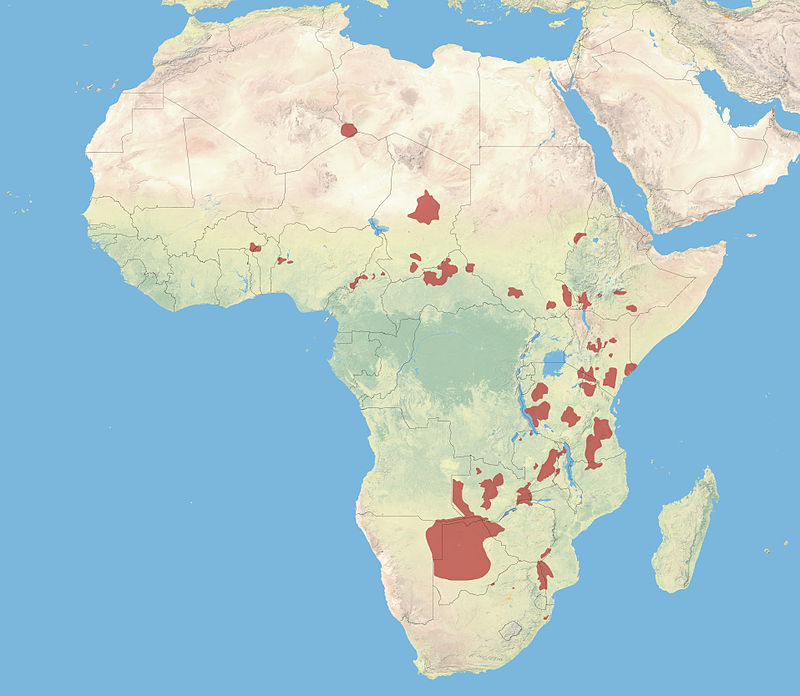







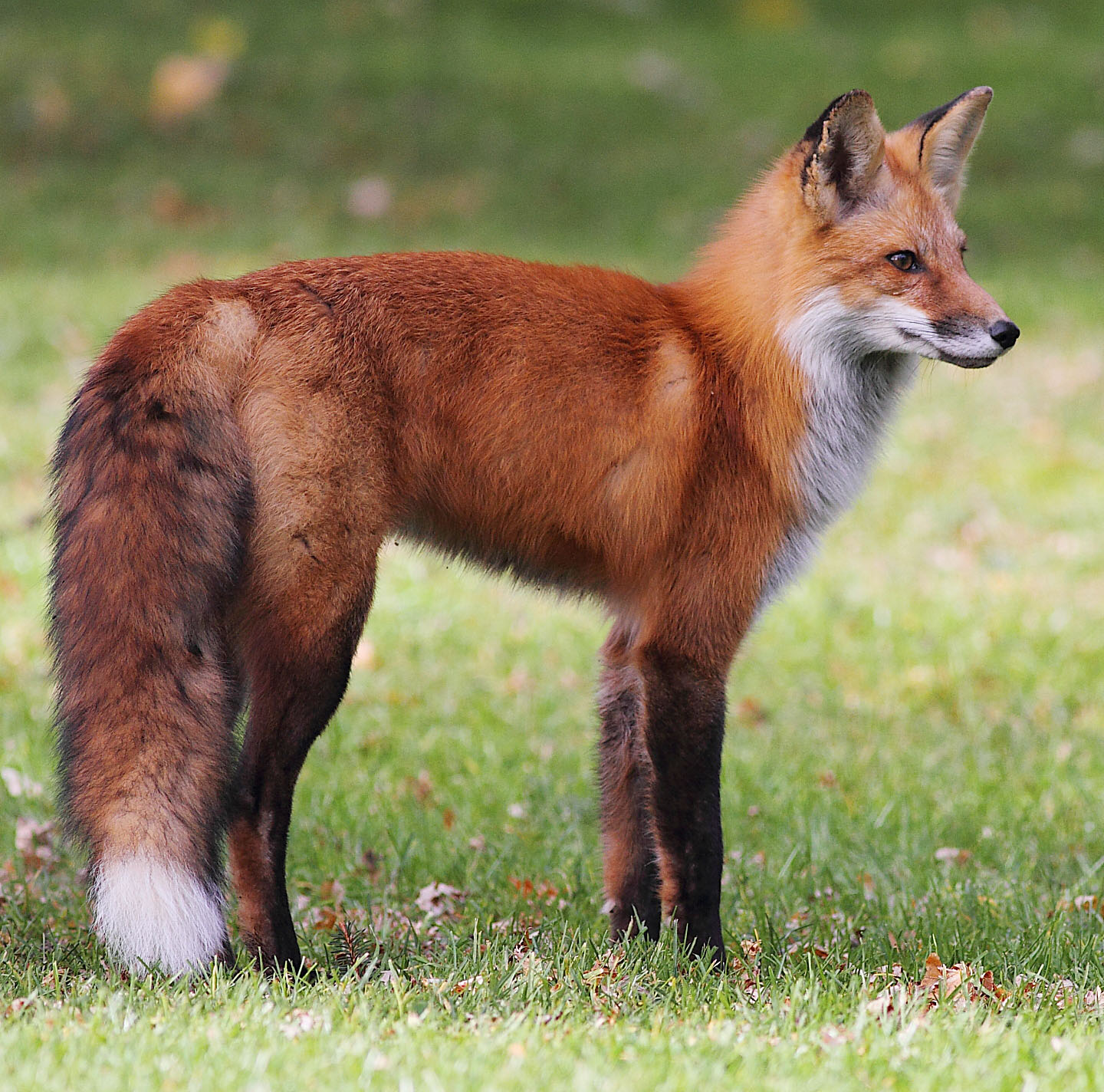
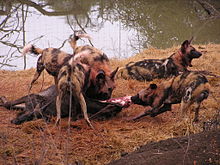




No comments:
Post a Comment
Note: Only a member of this blog may post a comment.